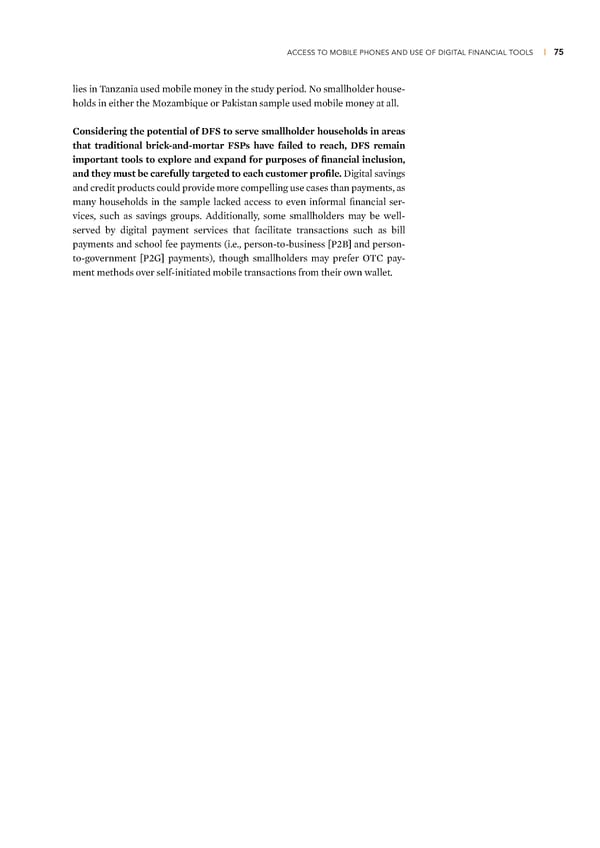ACCESS TO MOBILE PHONES AND USE OF DIGITAL FINANCIAL TOOLS | 75 lies in Œan—ania used mobile money in the study period ˜o smallholder house- holds in either the –o—ambiue or aistan sample used mobile money at all ”onsidering the potential of DFS to sere smallholder households in areas that traditional bricƒ-and-mortar FS‚s hae failed to reach, DFS remain important tools to e‡plore and e‡pand for purposes of financial inclusion, and they must be carefully targeted to each customer profile ‰igital savings and credit products could provide more compelling use cases than payments, as many households in the sample laced access to even informal financial ser- vices, such as savings groups ˆdditionally, some smallholders may be well- served by digital payment services that facilitate transactions such as bill payments and school fee payments (ie, person-to-business ¬‘£® and person- to-government ¬‘‡® payments), though smallholders may prefer ¦Œ† pay- ment methods over self-initiated mobile transactions from their own wallet
 Financial Diaries with Smallholder Families Page 92 Page 94
Financial Diaries with Smallholder Families Page 92 Page 94